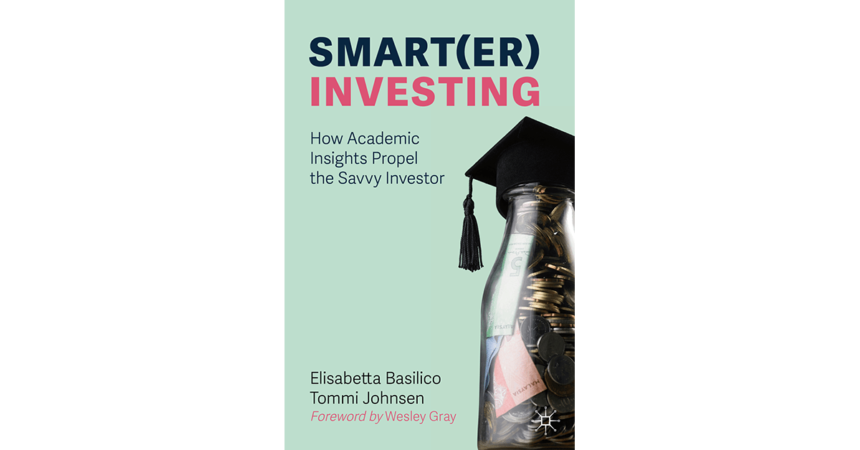Smart(er) Investing: How Academic Insights Propel the Savvy Investor. 2019. Elisabetta Basilico, PhD, CFA, and Tommi Johnsen, PhD, Palgrave Macmillan.
Editor’s Note: The reviewer and the primary author of the book both work at the University of Denver, but they have no professional or personal relationship.
How can investors, with their constant need to stay on top of the evolving field of finance, sort through numerous authors’ claims to have written the latest must-read study?
In Smart(er) Investing: How Academic Insights Propel the Savvy Investor, University of Denver professors Elisabetta Basilico, PhD, CFA, and Tommi Johnsen, PhD, (retired) provide a field guide to identifying quality research that enables those outside the ivory tower to incorporate proven ideas into the practice of investment management. They also offer producers of research sound guidelines for research designs that lead to findings that stand the test of time. In addition, the authors identify the red flags that signal that a study’s methodology will likely produce unreliable results.

Why do investors need to refine their ability to assess the
quality of research studies? Consider the widespread incentives simply to
produce research, regardless of its practical value. Professors need to
“publish or perish.” Similarly, asset managers must generate research to
justify their fees in a hypercompetitive market for investment services. In
this environment, investment professionals should read research with a critical
eye.
Basilico and Johnsen convey this message in a thorough
discussion of the techniques less scrupulous researchers use to generate
seemingly significant results. One such technique is data snooping,
which consists of excessive statistical inference that is not preplanned and is
made after examining the data. If researchers report only selected results from
multiple inferences, the reported statistical significance may be inaccurate,
and conclusions from the study may be misleading. The book also explains how
researchers may be p-hacking by applying a variety of statistical
techniques to the data but misleadingly reporting only the significant
findings. This form of data mining can result in findings that are based
on random patterns instead of true relationships. Furthermore, overfitting can
occur when models include an excessive number of variables and are trained to
such a degree that the results reflect spurious correlations.
While some researchers include too many variables and overspecify their model so that it does not perform well when applied to new data, other biases in research findings are created by exclusion. As the authors point out, studies should be designed to avoid survivorship bias, which arises when defunct companies or investment funds are not included in the sample. The book also explains how studies that do not reflect transaction costs, short-selling costs, or illiquidity can reach inaccurate conclusions. Basilico and Johnsen provide examples illustrating the importance of appropriate risk adjustments that reflect the latest research on factor models. Without being excessively technical, the book surveys the best academic studies that document how these issues have an economically meaningful impact on investment returns.

Smart(er) Investing does not just identify problems
with research methodology. It goes further by providing antidotes to these
practices, including dividing the sample data to conduct out-of-sample testing.
This discussion provides some of the book’s most valuable insights. Basilico
and Johnsen also explain the importance of requiring high levels of statistical
significance to avoid p-hacking and of developing hypotheses before conducting
a study.
The authors emphasize that real-world complications need to
be accounted for in research. Otherwise, the reported results will likely be
impossible to replicate in practice. The message for investment practitioners
is clear: Review financial research with a heightened awareness of the
potential biases.
In conclusion, in lieu of spending years getting a PhD to develop expertise in research, portfolio managers can read this book and quickly learn the best practices for sorting through the haystack of research to find the needle that will improve investment results. They can thereby avoid the pitfall of basing their strategies on faulty studies and consequently spending their time chasing spurious results that never generate alpha. Smart(er) Investing will improve readers’ critical thinking about research and equip them to employ only the best academic insights in their work in the financial markets.
If you liked this post, don’t forget to subscribe to the Enterprising Investor.
All posts are the opinion of the author. As such, they should not be construed as investment advice, nor do the opinions expressed necessarily reflect the views of CFA Institute or the author’s employer.








